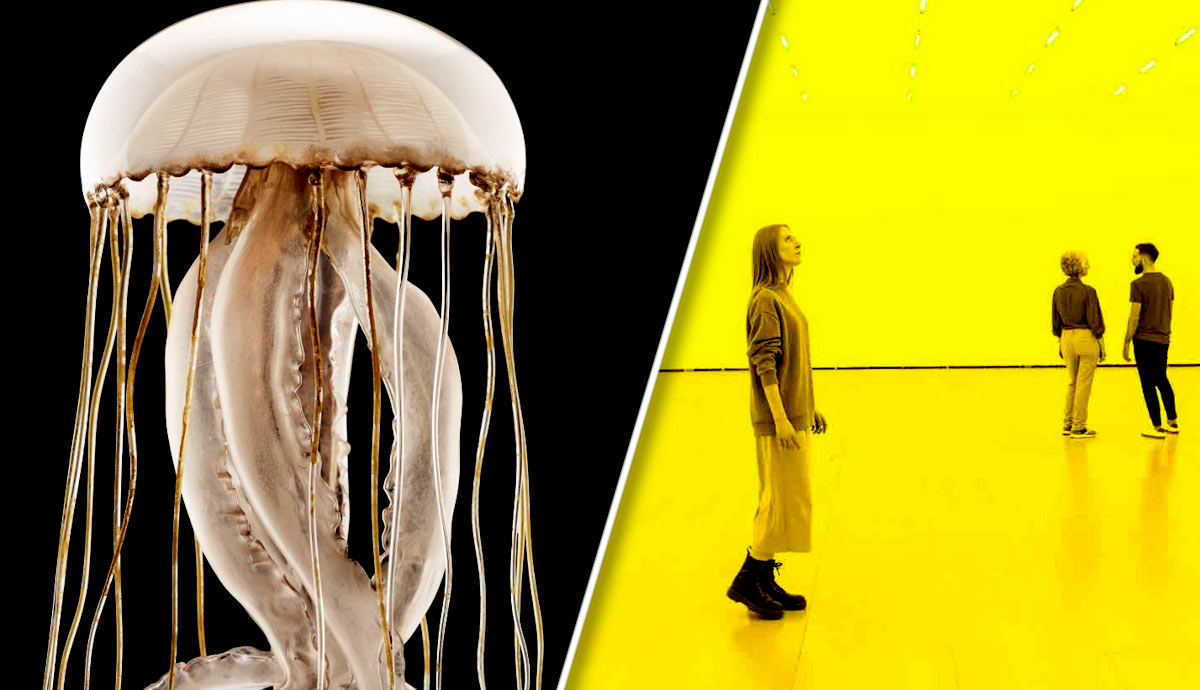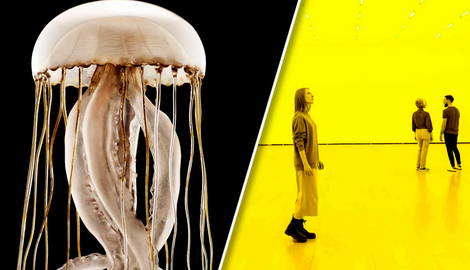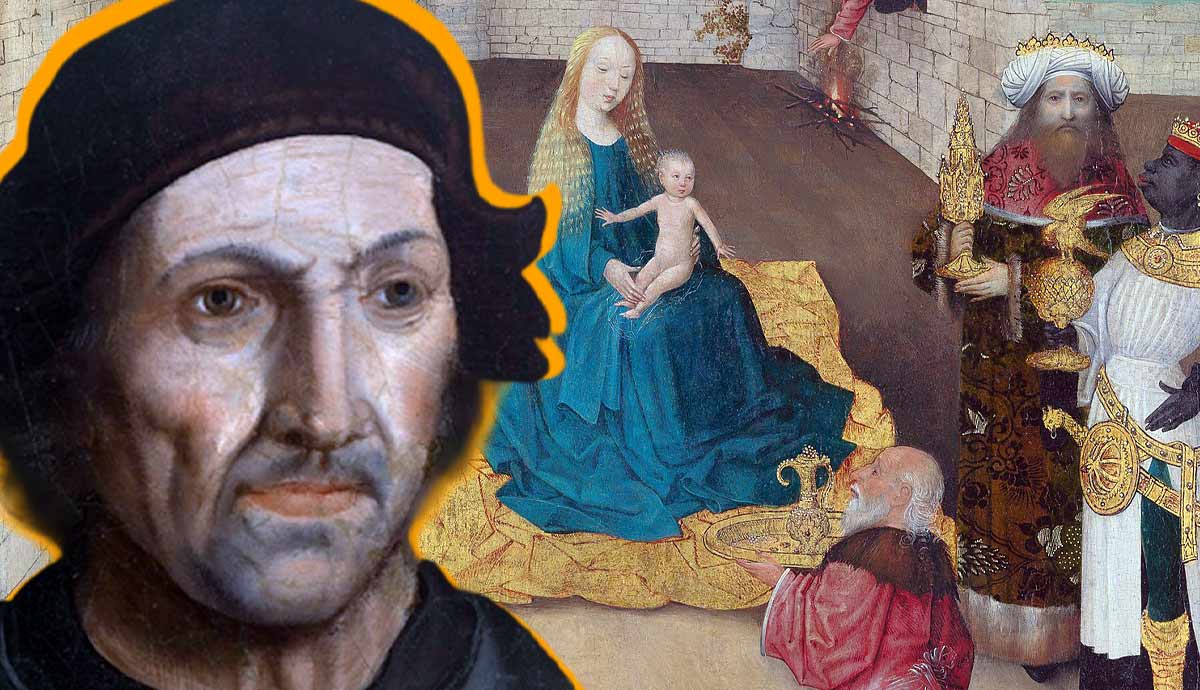
The juxtaposition of art and science as emotion and reason seem fixated in most present-day minds. However, such a clear division between the two fields is a relatively new thing. From the Middle Ages to modernity, art and science existed in symbiosis. In the modern era, scientific discoveries have inspired artistic progress and the development of abstract art. Today, the most progressive scientific institutions collaborate with artists to revolutionize technology and expand the understanding of art. Read on to learn more about the complex relationship between art and science!
Art and Science in the Middle Ages

During the European Middle Ages, religious institutions such as monasteries were the center of scientific and quasi-scientific knowledge. The exploration of the natural world was regarded as the extension of the religious studies of the divine power of God. Despite the Christianization of Europe, many scientific ideas came to the continent through translated sources from the Islamic world and Greek and Roman antiquity.
In the Middle Ages, the notion of art in the present-day context did not exist. Visual practices such as painting and sculpture were seen as yet another variety of craft that had to be given a specific purpose. In that sense, art opposed science as the work of hand opposed the work of mind, with the latter being a significantly more respectful activity. Illustrations were used in scientific manuscripts to clarify them, and religious art helped people memorize Bible verses and create visual associations. For the protoscientists of the Middle Ages, art was a schematic tool with little to no connection to physical reality.
Renaissance: The Boom of Anatomical Studies

The Renaissance era brought radical changes to the understanding of art and science as broad concepts. According to the Renaissance thinkers, God had built the world according to the laws of harmony, thus humanity’s goal was to explore them and apply them to their own creations. Art became inseparable from science with artists trying to find empirical reasoning for their works. Artists like Albrecht Durer and Leonardo da Vinci published theoretical treatises on proportion and geometry. Studying and practicing art became a necessity for any educated man since it became associated with both intellectual and spiritual development.
Even from the technical point of view, sciences and art were fused. For instance, in Renaissance Italy, artists and doctors belonged to the same professional guild. The reason was their equal dependence on the apothecary professionals, from which the doctors purchased ingredients for drugs, while artists bought pigments for mixing paint.
The studies of anatomy which greatly developed during the Renaissance were propelled by the relative normalization of autopsies and studies of corpses. This grim practice became popular even among the artists who aimed to properly study anatomy. The famous Michelangelo performed several dozens of dissections. He sometimes even fought with the outraged relatives of the diseased, who did not want their loved ones to be cut open.

Autopsies were usually performed on the bodies of recently executed criminals. Moreover, due to the weather conditions and the rapid decay of bodies in warm environments, the procedure was only possible in the winter months. Such limitations made proper studies of medicine almost impossible for students. There were also simply not enough bodies at hand, which led to the terrifying practice of body snatching and the robbing of fresh graves, not for the material goods in it, but for the bodies that were buried.
To stay within legal grounds and still allow their students to get familiar with human bodies, professors reached out to artists and craftsmen. The practice of scientific illustration was already popular in Europe at that time, but flat drawings could not provide a full picture. Thus, artists started to produce three-dimensional anatomical models with removable body parts and organs. The first objects, rather crude and massive, were carved out of wood with heavy parts clanking and evoking no association with living bodies. The perfect solution for this problem was wax, which artists molded and painted to give the impression of skin and tissue. Such figures, often representing women, received the name Anatomical Venuses.
The artistic component of anatomical models was immense and greatly surpassed the immediate needs of doctors. The wax Venuses had their hair braided and real lashes implanted around glass eyes. Many of them wore pearl strings around their pale necks and looked asleep rather than dead despite their intestines presented on display. According to notes from doctors, artists specifically made the figures beautiful so young students would not be shocked by the gore and odor of real bodies.
Blaschka Models: The Glass Miracle of Modern Science

The concept of botanical and anatomical models blossomed through the entirety of the nineteenth century. Among the most remarkable masters of it were the Blaschka dynasty from Dresden. Leopold and Rudolf Blaschka, father and son, were famous glass artists of Czech origin trained in Bohemian and Italian traditions. Leopold Blaschka mostly worked with jewelry, costume accessories, and glass eyes, as was expected from a glass artist. In his free time, he created glass models of plants which were viewed as an expensive curiosity and did not bring him any money.

During one of his trips from Europe to the US, his ship got stuck at sea for several weeks. Bored and worried, Blaschka spent time studying the marine fauna and making sketches in his notebooks. Upon his return home, a friend of Blaschka, the director of the Natural History Museum in Dresden, asked him to turn these drawings into glass. In the nineteenth century, preserving marine fauna for study was nearly impossible. Colorful jellyfish and anemones turned into sad drooping masses minutes after being removed from the water. Formalin, which helped preserve other animals, also did not help, completely ruining the fragile marine beauty. With his unique glasswork skill and attention to detail, Blaschka recreated the beauty of marine life with great precision. Harvard University was one of the most generous commissioners of Blaschka models for educational purposes, ordering several hundreds of his marine creatures.
Science and Modern Art

Modernity brought many scientific discoveries, from photography and telephone to explorations of particles and invisible waves. Many of the most progressive artists of their century shared a deep interest in science and applied it to their works. The famous abstract pioneer Hilma af Klint earned a living as an illustrator of botanical and zoological atlases, producing exact watercolor copies of flowers, leaves, and body parts. These skills would help her develop her own non-representational language of art. Many of her abstract compositions contain visual references to cell structure or botanical motifs. She was also interested in physics. After a 1913 discovery of atomic variety, Hilma af Klint responded with a series of paintings titled The Atom.

Other pioneering artists of the century were similarly interested in science. Of particular importance to all of them was the theory of evolution. Artists like Piet Mondrian and Wassily Kandinsky applied this concept to spirituality, attempting to trigger the evolution of the human soul and faith. Other modern artists like Gustav Klimt, who was more than familiar with Darwinism and other branches of evolution theory, took a slightly more literal approach. In his Golden Paintings, Klimt depicted primordial environments of cosmos and water and represented fragments of cells and tissue, disguised as decorative elements.
Contemporary Art and Science: New Forms of Collaboration

Today, the collaboration of art and science is only growing, sprouting new possibilities and contexts. Among the most famous figures who blend science with art is the American-Israeli designer Neri Oxman. Oxman, now an MIT professor in charge of her own laboratory, focuses her effort on functional design that is both astonishingly beautiful and harmless for the environment. One of her most famous works is the Silk Pavillion, a cocoon-like structure created not by Oxman and her team but by a colony of silkworms coordinated by a robotic hand. This combination of nature and technology allows for a sustainable and cruelty-free production of silk fabrics since the silkworms do not die as a result.
Scientific references are important for other environmentalist artists in the world of contemporary art. The Danish artist Olafur Eliasson uses theories of light, color, and natural laws to challenge our perception of the world and trigger positive changes in our attitude toward the natural realm. One of his most famous works, Room for One Color, is a simple white room with strong yellow light projected from the ceiling. Due to the nuances of the human eye and wave frequencies, visitors stop distinguishing colors, seeing everything around them in black and white.










